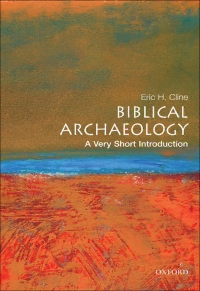Table Of ContentCover Page: 1
Copyright Page Page: 6
Very Short Introduction Page: 3
Title Page Page: 5
Dedication Page: 7
Acknowledgments Page: 8
Contents Page: 9
List of illustrations Page: 10
Introduction Page: 11
Part I The evolution of the discipline Page: 12
1 The nineteenth century: the earliest explorers Page: 13
2 Before the Great War: from theology to stratigraphy Page: 16
3 The interwar period: square holes in round tells Page: 19
4 After 1948: biblical veracity and nationalism Page: 22
5 Beyond the Six-Day War: new surveys and strategies Page: 25
6 The 1990s and beyond: from nihilism to the present Page: 28
Part II Archaeology and the Bible Page: 31
7 From Noah and the Flood to Joshua and the Israelites Page: 32
8 From David and Solomon to Nebuchadnezzar and the Neo-Babylonians Page: 35
9 From the Silver Amulet Scrolls to the Dead Sea Scrolls Page: 38
10 From Herod the Great to Jesus of Nazareth Page: 41
11 From the Galilee Boat to the Megiddo Prison Mosaic Page: 44
12 Fabulous finds or fantastic forgeries? Page: 47
Epilogue Page: 52
References Page: 53
Further reading Page: 57
Index Page: 58
Description:Public interest in biblical archaeology is at an all-time high, as television documentaries pull in millions of viewers to watch shows on the Exodus, the Ark of the Covenant, and the so-called Lost Tomb of Jesus. Important discoveries with relevance to the Bible are made virtually every year--during 2007 and 2008 alone researchers announced at least seven major discoveries in Israel, five of them in or near Jerusalem. Biblical Archaeology offers a passport into this fascinating realm, where ancient religion and modern science meet, and where tomorrow's discovery may answer a riddle that has lasted a thousand years.Archaeologist Eric H. Cline here offers a complete overview of this exciting field. He discusses the early pioneers, such as Sir William Matthew Flinders Petrie and William Foxwell Albright, the origins of biblical archaeology as a discipline, and the major controversies that first prompted explorers to go in search of objects and sites that would "prove" the Bible. He then surveys some of the most well-known biblical archaeologists, including Kathleen Kenyon and Yigael Yadin, the sites that are essential sources of knowledge for biblical archaeology, such as Hazor, Megiddo, Gezer, Lachish, Masada, and Jerusalem, and some of the most important discoveries that have been made, including the Dead Sea Scrolls, the Mesha Inscription, and the Tel Dan Stele. Subsequent chapters examine additional archaeological finds that shed further light on the Hebrew Bible and New Testament, the issue of potential frauds and forgeries, including the James Ossuary and the Jehoash Tablet, and future prospects of the field.Biblical Archaeology: A Very Short Introduction captures the sense of excitement and importance that surrounds not only the past history of the field but also the present and the future, with fascinating new discoveries made each and every season.About the Series: Combining authority with wit, accessibility, and style, Very Short Introductions offer an introduction to some of life's most interesting topics. Written by experts for the newcomer, they demonstrate the finest contemporary thinking about the central problems and issues in hundreds of key topics, from philosophy to Freud, quantum theory to Islam.

